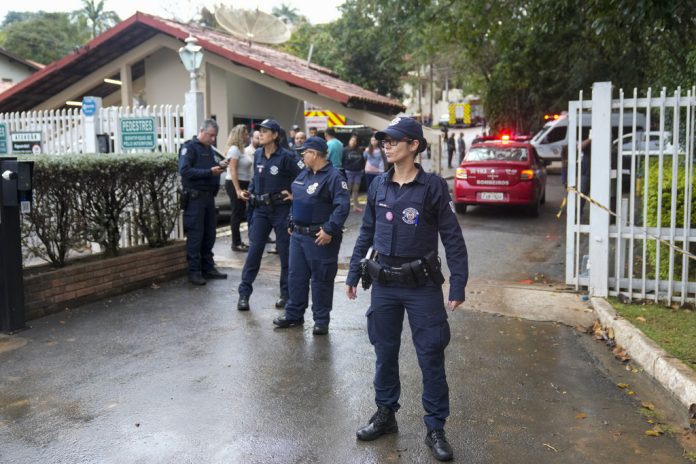VINHEDO, Brazil (AP) — Brazilian authorities worked Saturday to piece together what exactly caused the plane crash in Sao Paulo state the prior day that killed all 61 people on board.
Local airline Voepass’ plane, an ATR 72 twin-engine turboprop, was headed for Sao Paulo’s international airport in Guarulhos with 57 passengers and 4 crew members when it went down in the city of Vinhedo.
Images recorded by witnesses showed the aircraft in a flat spin and plunging vertically before smashing to the ground inside a gated community, and leaving an obliterated fuselage consumed by fire. Residents said there were no injuries on the ground.
Rain drizzled down on rescue workers as they recovered the first bodies from the scene in the chill of the Southern Hemisphere’s winter. Some residents of the condominium silently left to spend the night elsewhere.
It was the world’s deadliest airline crash since January 2023, when 72 people died on board a Yeti Airlines plane in Nepal that stalled and crashed while making its landing approach. That plane also was an ATR 72, and the final report blamed pilot error.
A report Friday from Brazilian television network Globo’s meteorological center said it “confirmed the possibility of the formation of ice in the region of Vinhedo,” and local media cited experts pointing to icing as a potential cause for the crash.
An American Eagle ATR 72-200 crashed on Oct. 31, 1994, and the United States National Transportation Safety Board determined that the probable cause was ice buildup while the plane was circling in a holding pattern. The plane rolled at about 8,000 feet and dove into the ground, killing all 68 people on board. The U.S. Federal Aviation Administration issued operating procedures for ATRs and similar planes, telling pilots not to use the autopilot in icing conditions.
But Brazilian aviation expert Lito Sousa cautioned that meteorological conditions alone might not be enough to explain why the plane fell in the manner that it did on Friday.
“Analyzing an air crash just with images can lead to wrong conclusions about the causes,” Sousa told the AP by phone. “But we can see a plane with loss of support, no horizontal speed. In this flat spin condition, there’s no way to reclaim control of the plane.”
Speaking to reporters Friday in Vinhedo, Sao Paulo Public Security Secretary Guilherme Derrite said the plane’s black box had been recovered, apparently in a preserved state.
Marcelo Moura, director of operations for Voepass, told reporters Friday night that, while there were forecasts for ice, they were within acceptable levels for the aircraft.
Likewise, Lt. Col. Carlos Henrique Baldi of the Brazilian air force’s center for the investigation and prevention of air accidents, told reporters in a late afternoon press conference that it was still too early to confirm whether ice caused the crash.
The plane is “certified in several countries to fly in severe icing conditions, including in countries unlike ours, where the impact of ice is more significant,” said Baldi, who heads the center’s investigation division.
In an earlier statement, the center said that the plane’s pilots did not call for help nor say they were operating under adverse weather conditions. There has been no evidence that the pilots tried to contact controllers of regional airports, either, Ports and Airports Minister Silvio Costa Filho told reporters Friday night in Vinhedo.
Brazil’s Federal Police began its own investigation, and dispatched specialists in plane crashes and the identification of disaster victims, it said in a statement.
French-Italian plane manufacturer ATR said in a statement that it had been informed that the accident involved its ATR 72-500 model, and that company specialists are “fully engaged to support both the investigation and the customer.”
The ATR 72 generally is used on shorter flights. The planes are built by a joint venture of Airbus in France and Italy’s Leonardo S.p.A.
Crashes involving various models of the ATR 72 have resulted in 470 deaths going back to the 1990s, according to a database of the Aviation Safety Network.
Brazilian authorities began transferring the corpses to the morgue Friday, and called on victims’ family members to bring any medical, X-ray and dental exams to help identify the bodies. Blood tests were also done to help identification efforts.
Costa Filho, the airports minister, said the air force’s center will also conduct a criminal probe of the accident.
“We will investigate so this case is fully explained to the Brazilian people,” he said.
___
Sá Pessoa reported from Sao Paulo and Koenig from Dallas.
Source: post





